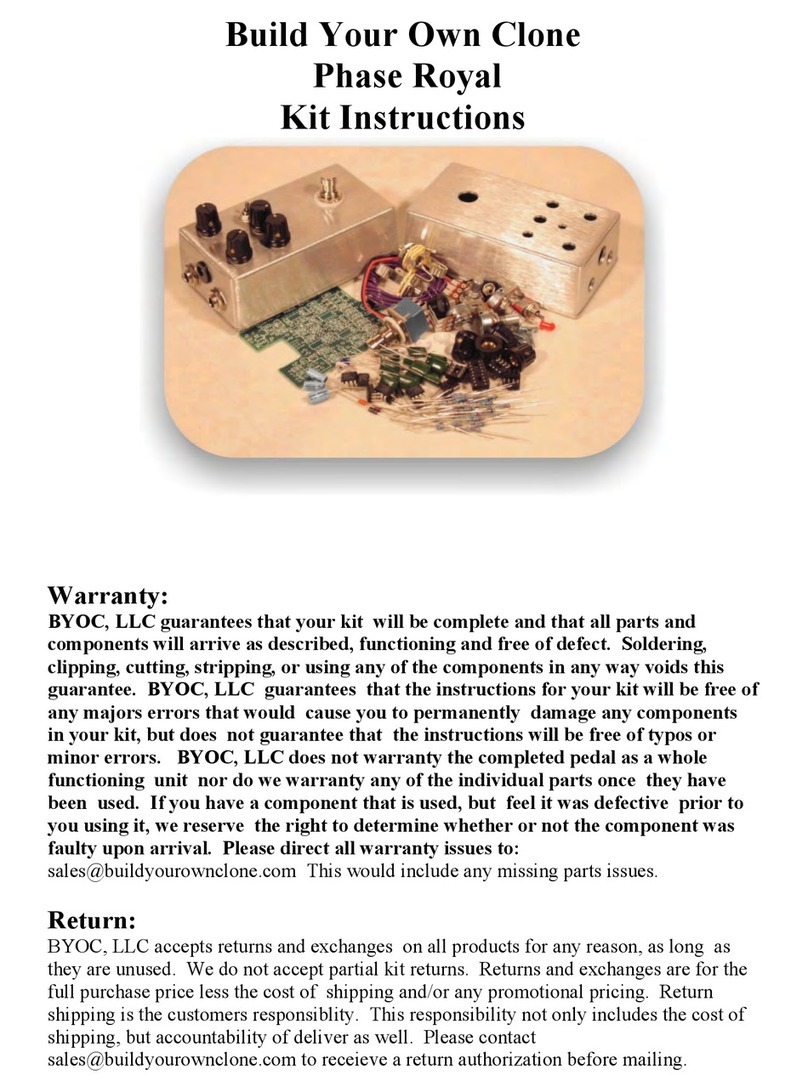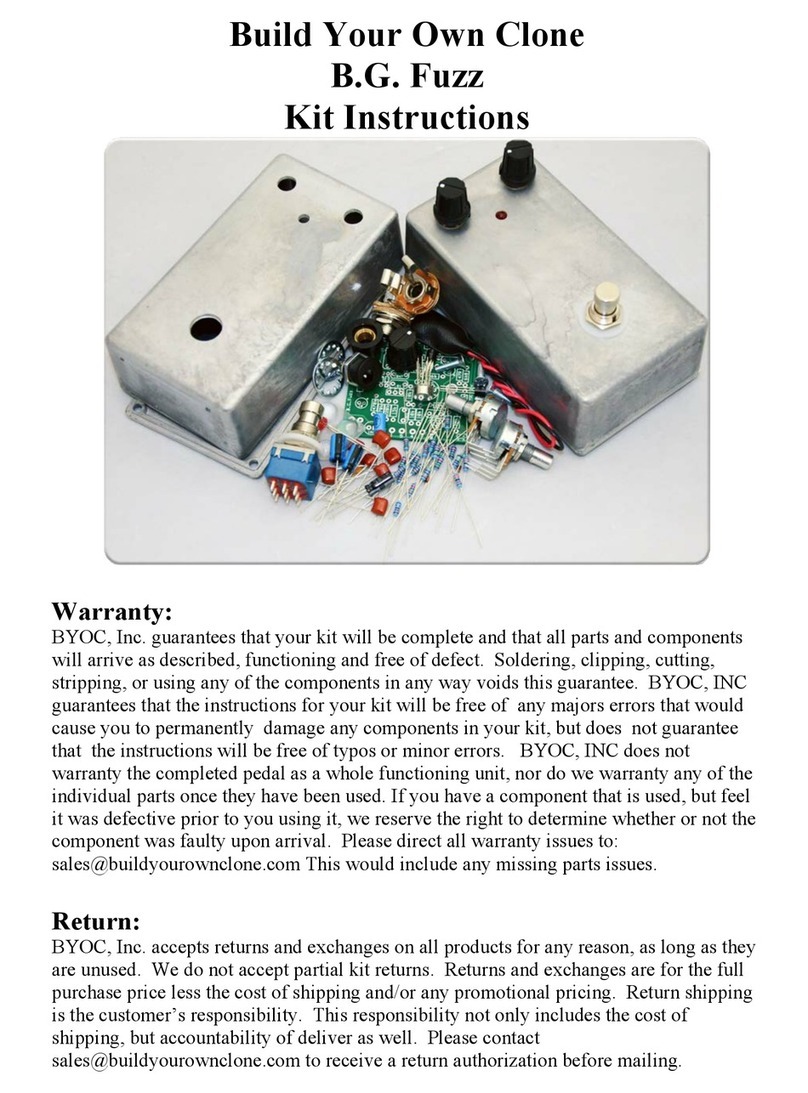BYOC Leeds Fuzz Kit Instructions
Warranty:
BYOC, LLC guarantees that your kit will be complete and that all parts and
components will arrive as described, functioning and free of defect. Soldering,
clipping, cutting, stripping, or using any of the components in any way voids this
guarantee. BYOC, LLC guarantees that the instructions for your kit will be free of
any majors errors that would cause you to permanently damage any components
in your kit, but does not guarantee that the instructions will be free of typos or
minor errors. BYOC, LLC does not warranty the completed pedal as a whole
functioning unit nor do we warranty any of the individual parts once they have
been used. If you have a component that is used, but feel it was defective prior to
you using it, we reserve the right to determine whether or not the component was
faulty upon arrival. Please direct all warranty issues to:
Return:
BYOC, LLC accepts returns and exchanges on all products for any reason, as long as
they are unused. We do not accept partial kit returns. Returns and exchanges are for the
full purchase price less the cost of shipping and/or any promotional pricing. Return
shipping is the customer’s responsibility. This responsibility not only includes the cost of
shipping, but accountability of deliver as well. Please contact
Tech Support:
BYOC, LLC makes no promises or guarantees that you will successfully complete your
kit in a satisfactory manner. Nor does BYOC, LLC promise or guarantee that you will
receive any technical support. Purchasing a product from BYOC, LLC does not entitle
you to any amount of technical support. BYOC, LLC does not promise or guarantee that
any technical support you may receive will be able to resolve any or all issues you may
be experiencing.




























